Acer Aspire TimelineU M3: Life on the Kepler Verge
by Dustin Sklavos on March 13, 2012 5:56 PM ESTApplication and Futuremark Performance
While we've said before that Intel Core i7-2637M performance is pretty much a known quantity, Acer's TimelineU M3 takes things in a different direction. This is a 15.6" notebook that has dimensions comparable with Dell's XPS 14x and 15z, and a GPU that's at least theoretically well beyond either. At this juncture it's now worth seeing if the i7-2637M is a huge hit compared to, say, a standard voltage i5.
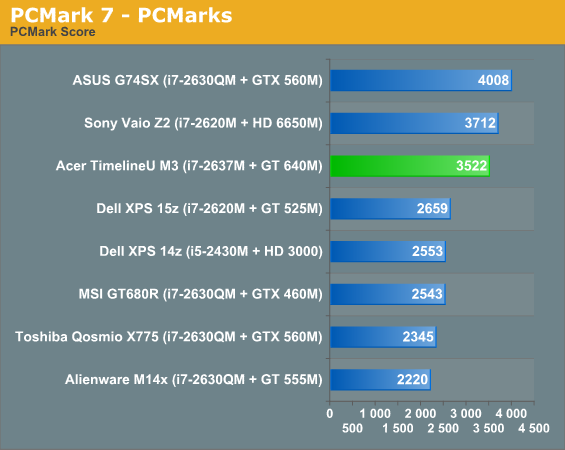
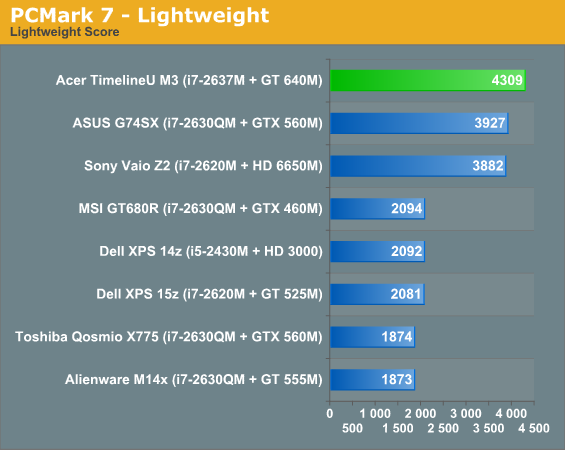
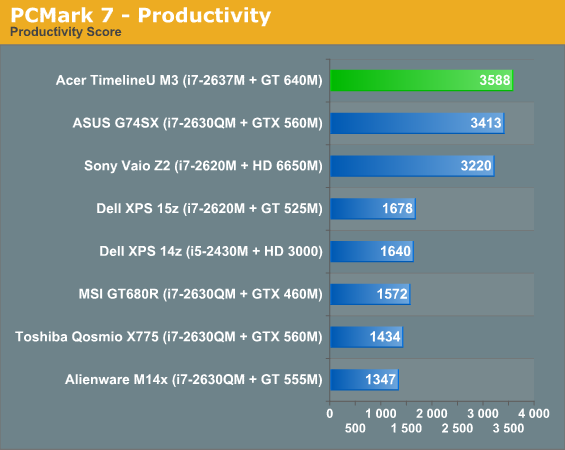
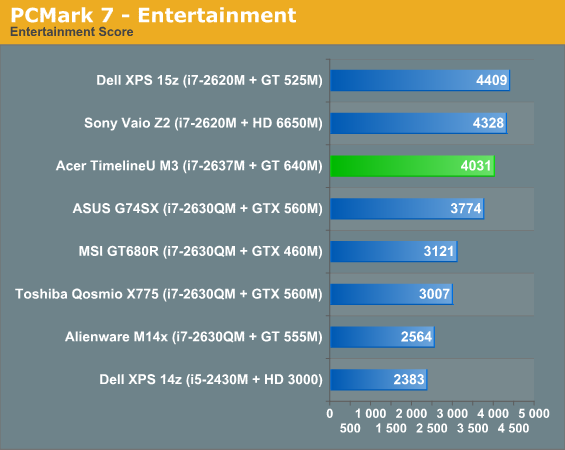
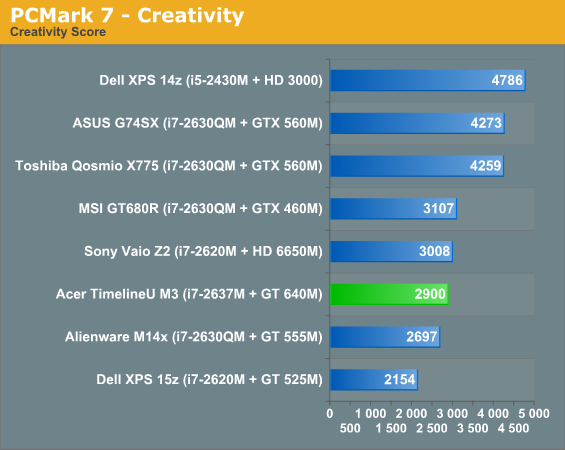
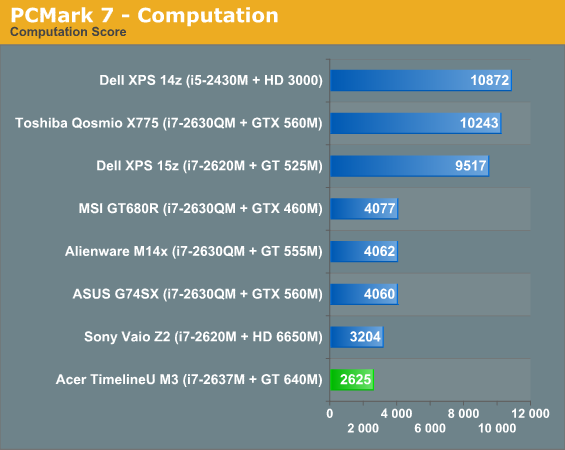
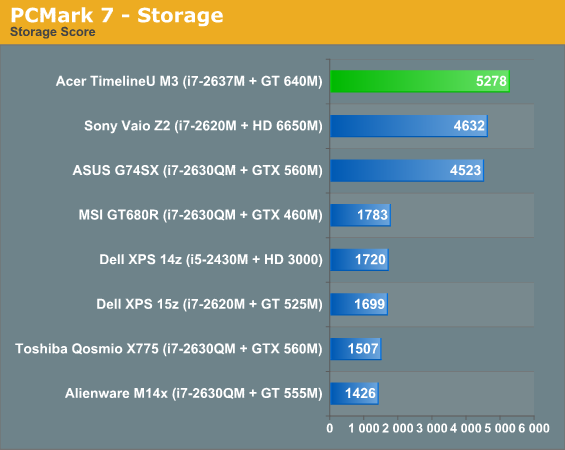
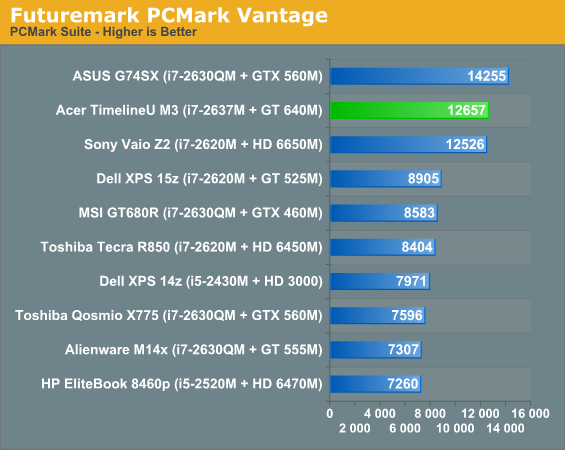
PCMark skews happily and heavily towards the reasonably fast SSD in the M3, despite that SSD only running at SATA 3Gbps speeds. The Computation benchmark also skews towards Intel's QuickSync, and it appears some of NVIDIA's drivers used to defer to the IGP during PCMark7. Let's see what happens when we shift the focus entirely to the CPU proper.
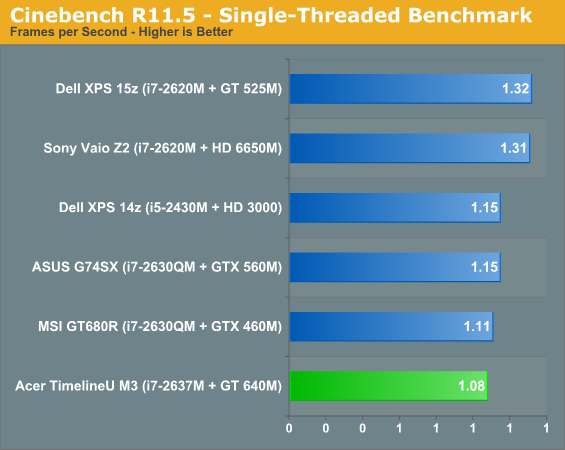
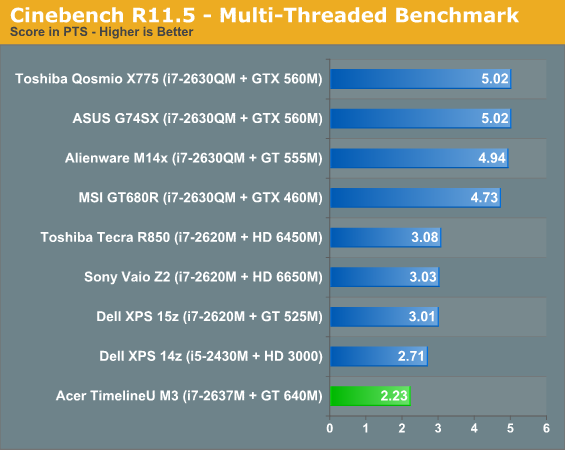
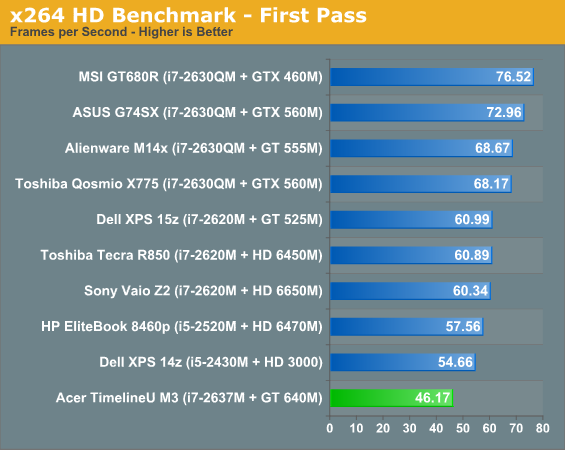
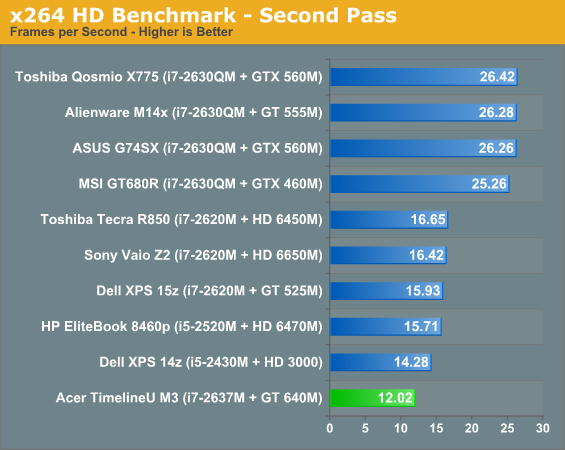
Unfortunately things just aren't so rosy once standard voltage CPUs are added to the equation. The i7-2637M doesn't perform poorly, but run-of-the-mill i5s do produce a good lead on it, and anything with four cores demolishes it as expected.

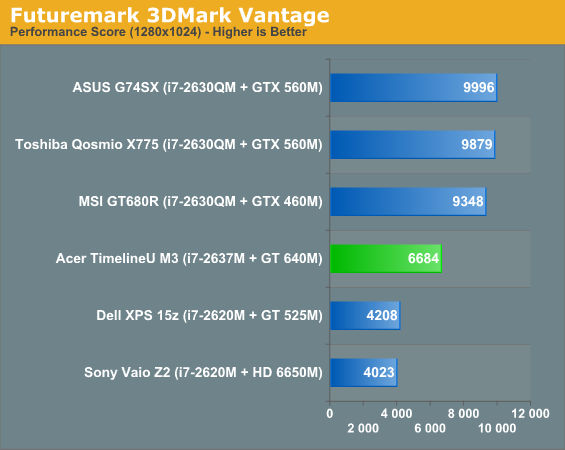
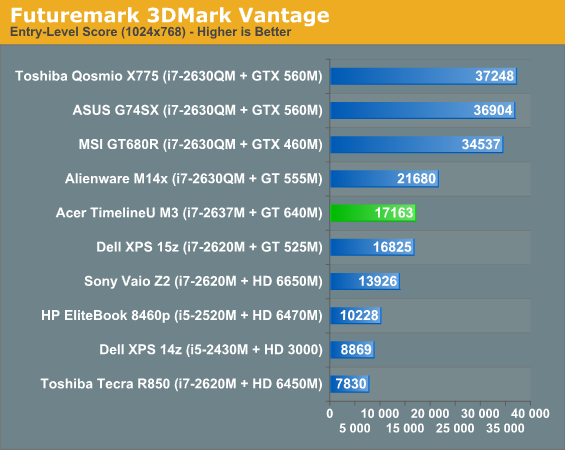
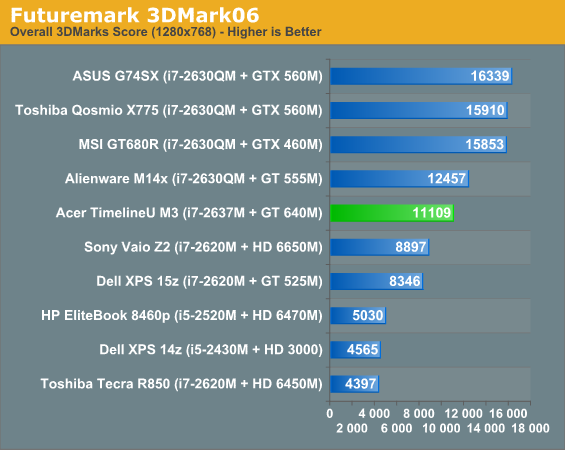
On the other hand, 3DMark approves of the GeForce GT 640M's substantial shader power. We don't have any systems with the GT 540M on our chart, but given how the 640M is nipping at the M14x's GT 555M's heels, it's reasonable to assume the 640M is able to largely demolish its predecessor. What's interesting is seeing how the 640M's 384 CUDA cores compare to the GTX 460M/560M in practice, both of which have just 192.










76 Comments
View All Comments
tipoo - Wednesday, March 14, 2012 - link
It has 192, yeah. Interesting. But its in the same thermal envelope so who cares how many shaders there are, maybe they went AMDs route with less powerful individually but more numerous shaders.extide - Wednesday, March 14, 2012 - link
It pretty clear that the CUDA cores in kepler cannot be directly compared to the ones in past generations.With the full GK104 being rumored to have 1536 yet nowhere near 3x as fast as a GTX580 (512 CUDA cores), plus this card with 384 and significantly less performance than the 192 based fermi card.
MarsMSJ - Wednesday, March 14, 2012 - link
The mention of the 6650M in the Sony notebook should warrant an asterisk on all the GPU performance graphs. In those graphs there is nothing to differentiate or tell a reader that a built in 6650M will perform much better than a 6650M. We all know those graphs will be referenced and they imply that 6650M in a standard or non standard implementation will work
I can see clearly why NVidia likes your graphs because they're misleading.
mamisano - Wednesday, March 14, 2012 - link
I totally agree and glad that someone else feels the same way as me.JarredWalton - Wednesday, March 14, 2012 - link
The text has an explanation for the poor performance of the 6650M, and actually I have a 6630M review coming shortly where it outperforms the 6650M results, but there's still a large gap between it and the GT 640M.The bigger issue is that AMD doesn't have a lot of compelling laptops using their GPUs, and even the ones that do go with AMD have other quirks. The Z2 has it in an external dock where performance (at least on the internal laptop display) is hindered by Thunderbolt bandwidth; the VAIO SE16 (which I'm reviewing right now) has the 6630M, but the manually switchable graphics and almost complete lack of driver updates is going to make it a tough sell for gamers. HP's Envy has the same problem with driver updates.
We've heard from AMD that they'll be rolling out a "unified driver" for all their switchable graphics laptops, but until (if) that happens you're basically asking for problems down the road. Optimus may not be perfect, but compared to the AMD alternative it sure feels like it. :-(
MarsMSJ - Wednesday, March 14, 2012 - link
I understand what you're saying about your options. However, that still doesn't address the fact that your graphs do not express this is an exotic GPU implementation with additional contraints that are not normal, driver quirks or not. Keep mind you have lots of graphs and a very important bit of information hidden half way between them.You're not new to the internet, you know the nature and power of these graphs and their interpretation on the web. I'm not surprised in the least bit NVidia loves your graphs and testing.
Anyway.... any indication about the heat from this NVidia mobile GPU being common thing with upcoming products? :)
Hulk - Wednesday, March 14, 2012 - link
with the Super PLS screen.Help us Dustin Sklavos Kenobi, you're our only hope!
kenyee - Wednesday, March 14, 2012 - link
They should have stuck at least a 1080p screen on it and 4 memory slots so you can stuff 16GB of memory in it :-PI'm hoping the Macbook Air shows them how it's done too...and I hate rooting for Apple :-P
Sony's Z2 looks great, but has the same memory limitations, and no Kepler GPU :-(
trajan2448 - Wednesday, March 14, 2012 - link
I travel quite a bit and I always watch movies with my laptop. I hope they keep the DVD drive until there is some equivalent no hassle solution.noeldillabough - Wednesday, March 14, 2012 - link
Honestly say I haven't used an optical drive on laptops for years. Rip the movies to DivX or XVid and watch em on whatever device you like.